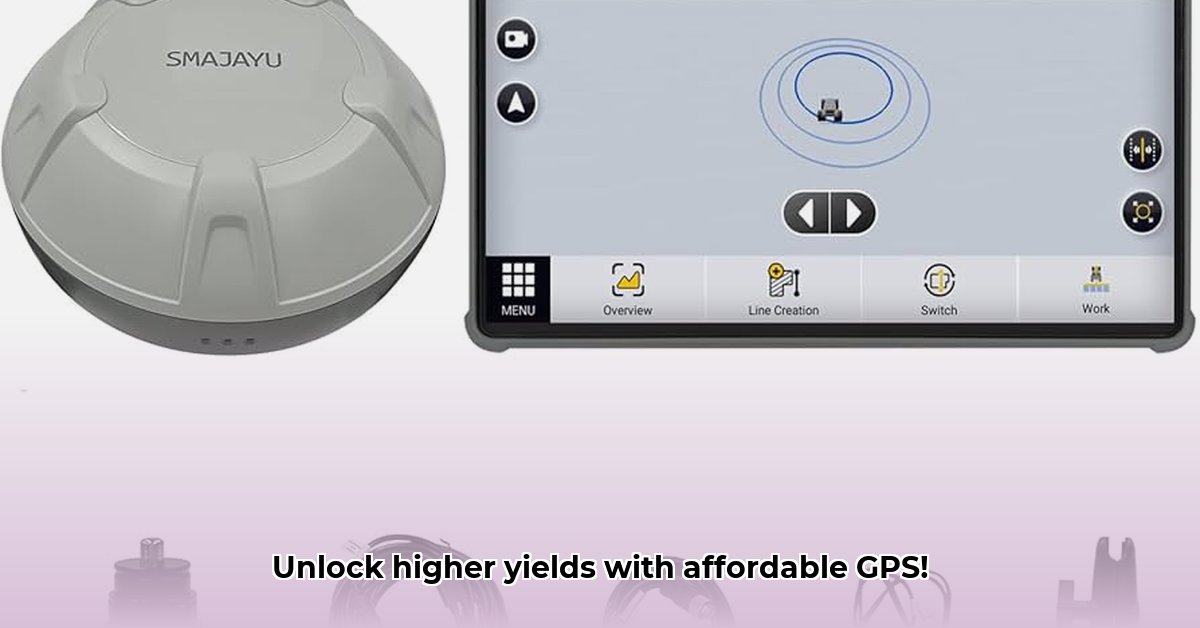
This comprehensive guide helps farmers select and utilize budget-friendly GPS guidance systems to enhance efficiency and sustainability. We'll navigate choosing the right system, setting it up, and maximizing its benefits, from saving time and fuel to significantly improving yields. Whether you're a seasoned professional or new to precision farming technology, this guide provides actionable steps for success. For more information on tractor weights, check out this helpful resource: Tractor Weights.
Choosing the Right Tractor GPS System: A Step-by-Step Guide
Selecting the optimal GPS system mirrors choosing the right tool for a specific job. The ideal system depends on your needs and budget. This step-by-step guide simplifies decision-making.
Step 1: Define Your Needs
What tasks will the GPS system perform? Basic tasks like plowing or fertilizer application across large fields might only require a simpler, less precise system. More precise tasks such as seed planting or crop spraying necessitate a higher-accuracy system. Think of it like the difference between using a compass for general direction and a GPS navigating city streets.
Step 2: Determine Your Budget
Budget-friendly GPS systems offer excellent starting points, but remember ongoing subscription fees for accurate signals may apply (similar to car maintenance). Factor in the total cost of ownership – initial purchase price plus ongoing expenses – before making a purchase.
Step 3: Thoroughly Research Available Options
Several brands offer various systems, each with unique strengths and weaknesses. Research thoroughly, comparing features, ease of use, and accuracy across numerous options. Reading reviews and consulting experienced farmers is highly recommended.
Step 4: Consider Long-Term Growth
Will your needs change? Some systems allow for functional upgrades as your operation scales. Features like automated steering or variable-rate application increase efficiency and offer long-term savings. Investing in a system with growth potential avoids premature obsolescence.
Understanding Accuracy and its Impact on Your Bottom Line
GPS systems achieve varying accuracy levels based on the signals they use. Basic systems rely solely on satellite signals, while enhanced systems utilize signals like EGNOS or Omnistar. RTK (Real-Time Kinematic) correction provides the highest precision.
Higher accuracy minimizes overlap when applying inputs (fertilizer, seeds, pesticides), reducing waste and boosting profitability. This translates to improved yields and enhanced environmental sustainability. While the most accurate systems have higher upfront costs, the savings from reduced waste often quickly offset this initial investment. "The reduction in input waste alone can easily pay for a more precise system within a single growing season," says Dr. Amelia Hernandez, Agricultural Engineer at Purdue University.
Budget Tractor GPS System Comparison: Weighing the Pros and Cons
The best system depends on individual needs. The following table highlights the trade-offs between basic and advanced systems:
| Feature | Basic System (e.g., Patchwork-style) | Advanced System (e.g., Trimble CFX-750 with RTK-style) |
|---|---|---|
| Initial Cost | Lower | Higher |
| Accuracy | Suitable for basic, large-scale tasks | Very high; ideal for precision work in smaller fields or specialty crops |
| Key Features | Straight-line guidance; possibly basic data logging | Automated steering, section control, detailed mapping, variable-rate application |
| Maintenance | Typically low | Potentially higher, might require specialized service |
| Return on Investment (ROI) | Shorter payback, especially for simple tasks | Longer payback, but higher long-term savings due to precision |
Data Management and Sustainable Farming Practices
Many modern tractor GPS systems log and map field data, offering valuable insights into field health and performance. This data facilitates input optimization (fertilizer, pesticides), promoting sustainable farming. "Data-driven decision-making is crucial for long-term farm profitability and environmental stewardship," notes Dr. John Miller, agricultural economist at Iowa State University. This essentially creates a comprehensive health record for your fields, allowing for precision inputs at the optimum time and location.
Risks and Responsibilities: A Balanced Perspective
Like any technology, GPS systems have potential risks: service disruptions, data breaches, and compatibility issues. It's crucial to understand data-privacy policies before committing to a system.
Step-by-Step Guide to Selecting Your GPS System
- Assess Needs: Define your farm's needs and budget constraints.
- Research Systems: Compare available systems based on features, accuracy, and cost. Don't hesitate to ask other farmers about their experiences.
- Read Reviews: Consult online reviews and farmer forums for unbiased feedback.
- Consider Long-Term Costs: Account for subscription fees and maintenance expenses.
- Test Systems (If Possible): Try before you buy to ensure user-friendliness and compatibility.
- Make Your Purchase: Select a system that optimally meets your needs and budget.
- Implement and Learn: Dedicate time to learning the system's functions.
The correct GPS system significantly enhances your farm's sustainability and profitability. Careful planning and consideration ensure you select a system providing long-term benefits.